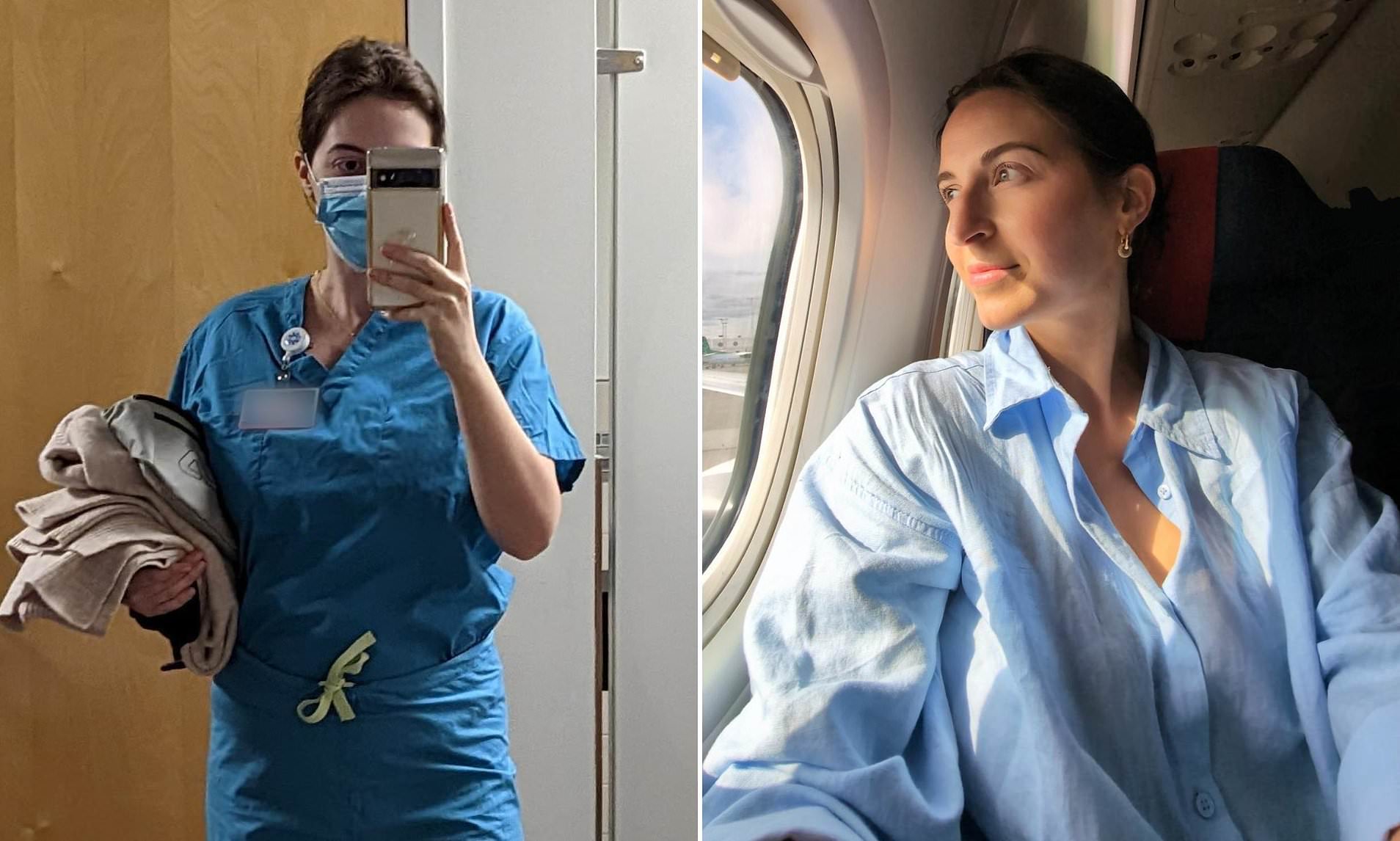A Transatlantic Journey for a Better Paycheck
For many, the idea of working in another country might seem like an extreme step, but for Courtney El Refai, a 31-year-old nurse from Sweden, it’s a practical solution to make ends meet. Her daily routine involves traveling 5,200 miles across the Atlantic from her home in Stockholm to work as a NICU nurse in San Francisco. This unique arrangement has allowed her to earn significantly more than she would in her home country.
Courtney moved to Sweden with her husband, Rami, and their two-year-old daughter in 2022. However, after giving birth in January 2023, the couple began splitting their time between the US and Europe. After a 19-month return to the US, Courtney secured a position as a NICU nurse in the San Francisco Bay Area during the summer of 2024. She then returned to Sweden in December 2024, committing to a grueling 11-hour flight to work, which has resulted in over 30,000 miles traveled and $1,500 spent since January.
Her work schedule is structured around a per-diem model, where she works four eight-hour shifts each month. This allows her to cluster her shifts and take six weeks off between assignments. Despite the long travel times and different time zones, Courtney says she doesn’t struggle with jet lag as much as expected. She finds that her part-time role in California pays more than a full-time job in Sweden, and one 12-hour shift can cover her monthly rent in Stockholm.
The Benefits of a Flexible Schedule
Courtney’s job offers flexibility, allowing her to manage her time effectively. She works weekends for extra pay and even gets 25% more if she’s training other nurses. This has given her a better work-life balance, as she feels less obligated to take on extra shifts. She also enjoys the experience of “flying away to work,” which she describes as a mini vacation. It gives her a chance to catch up with friends in the US while being away from her family for 10 days.
However, the time difference poses challenges, particularly when it comes to staying connected with her daughter. Despite this, Courtney believes her current setup is sustainable and has no plans to change anything soon. She values the time she spends with her daughter and is working on obtaining her Swedish citizenship while learning the language in her free time.
Financial Considerations and Living Costs
Financially, Courtney finds the arrangement beneficial. She pays around $500 for return flights every time she visits the US and, after covering accommodation costs, brings back roughly $5,000 after every eight-day stint. She books her flights in advance, prioritizing cost-effectiveness and adjusting her schedule accordingly.
Despite the benefits, there are downsides. She notes that the approval process for working as a nurse in Sweden is lengthy, and the pay difference is significant. In the US, especially in the San Francisco Bay Area, nurses are among the highest-paid in the country due to strong union representation. In contrast, nursing salaries in Sweden are much lower, making the decision to work in the US more financially appealing.
Living in Sweden also provides advantages, such as free daycare for her daughter and access to free healthcare. While she pays taxes in both countries, a double taxation treaty ensures she isn’t taxed twice on the same income.
Balancing Life and Work
Courtney’s story highlights the growing trend of professionals seeking opportunities abroad to improve their financial stability. Her unique approach to balancing life and work demonstrates how personal circumstances and economic factors can influence career choices. For now, she remains committed to her transatlantic commute, finding a way to thrive in both worlds.







